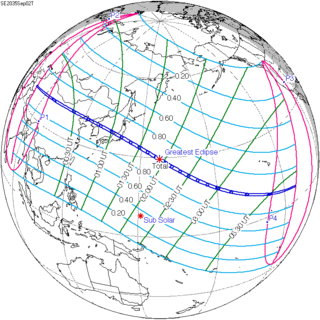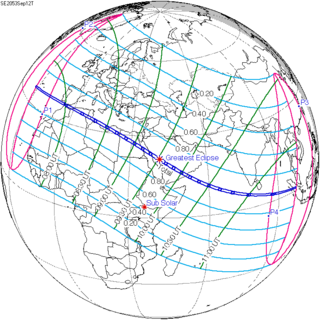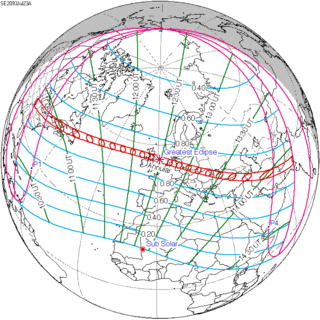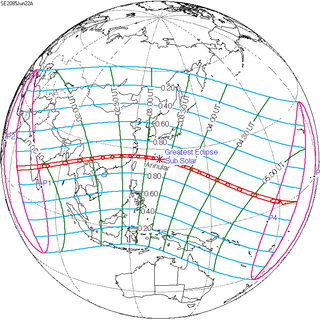 | |
| Venue | |
|---|---|
| Date(s) | 6–12 June 2024 |
The 2024 Asian Road Cycling Championships took place in Almaty, Kazakhstan from 6 to 12 June 2024. [1]
 | |
| Venue | |
|---|---|
| Date(s) | 6–12 June 2024 |
The 2024 Asian Road Cycling Championships took place in Almaty, Kazakhstan from 6 to 12 June 2024. [1]
| Event | Gold | Silver | Bronze |
|---|---|---|---|
| Individual road race | Kim Eu-ro | Lü Xianjing | Yevgeniy Fedorov |
| Individual time trial | Yevgeniy Fedorov | Dmitriy Gruzdev | Yukiya Arashiro |
| Event | Gold | Silver | Bronze |
|---|---|---|---|
| Individual road race | Song Min-ji | Nguyễn Thị Thật | Tang Xin |
| Individual time trial | Olga Zabelinskaya | Yanina Kuskova | Rinata Sultanova |
| Rank | Nation | Gold | Silver | Bronze | Total |
|---|---|---|---|---|---|
| 1 | 2 | 1 | 2 | 5 | |
| 2 | 2 | 0 | 0 | 2 | |
| 3 | 1 | 2 | 0 | 3 | |
| 4 | 0 | 1 | 1 | 2 | |
| 5 | 0 | 1 | 0 | 1 | |
| 6 | 0 | 0 | 1 | 1 | |
| 0 | 0 | 1 | 1 | ||
| Totals (7 entries) | 5 | 5 | 5 | 15 | |

Vellore Institute of Technology (VIT) is a private deemed university in Vellore, Tamil Nadu, India.

The Chinese zodiac is a traditional classification scheme based on the Chinese calendar that assigns an animal and its reputed attributes to each year in a repeating twelve-year cycle. In traditional Chinese culture, the Chinese zodiac is very important and exists as a reflection of Chinese philosophy and culture. Chinese folkways held that one's personality is related to the attributes of their zodiac animal. Originating from China, the zodiac and its variations remain popular in many East Asian and Southeast Asian countries, such as Japan, South Korea, Vietnam, Singapore, Nepal, Bhutan, Cambodia, and Thailand.

A total solar eclipse will occur at the Moon's descending node of orbit between Thursday, August 23 and Friday, August 24, 2063, with a magnitude of 1.075. A solar eclipse occurs when the Moon passes between Earth and the Sun, thereby totally or partly obscuring the image of the Sun for a viewer on Earth. A total solar eclipse occurs when the Moon's apparent diameter is larger than the Sun's, blocking all direct sunlight, turning day into darkness. Totality occurs in a narrow path across Earth's surface, with the partial solar eclipse visible over a surrounding region thousands of kilometres wide. Occurring only about 2.5 hours before perigee, the Moon's apparent diameter will be larger. Perigee did occur near the very end of this eclipse.

An annular solar eclipse occurred at the Moon’s ascending node of orbit on Sunday, June 21, 2020, with a magnitude of 0.994. A solar eclipse occurs when the Moon passes between Earth and the Sun, thereby totally or partly obscuring the Sun for a viewer on Earth. An annular solar eclipse occurs when the Moon's apparent diameter is smaller than the Sun's, blocking most of the Sun's light and causing the Sun to look like an annulus (ring). An annular eclipse appears as a partial eclipse over a region of the Earth thousands of kilometres wide. Occurring about 6.2 days after apogee, the Moon's apparent diameter was smaller.

An annular solar eclipse will occur at the Moon's descending node of orbit on Wednesday, May 21, 2031, with a magnitude of 0.9589. A solar eclipse occurs when the Moon passes between Earth and the Sun, thereby totally or partly obscuring the image of the Sun for a viewer on Earth. An annular solar eclipse occurs when the Moon's apparent diameter is smaller than the Sun's, blocking most of the Sun's light and causing the Sun to look like an annulus (ring). An annular eclipse appears as a partial eclipse over a region of the Earth thousands of kilometres wide. Occurring about 3.8 days before apogee, the Moon's apparent diameter will be smaller.

A total solar eclipse will occur at the Moon's ascending node of orbit between Saturday, September 1 and Sunday, September 2, 2035, with a magnitude of 1.032. A solar eclipse occurs when the Moon passes between Earth and the Sun, thereby totally or partly obscuring the image of the Sun for a viewer on Earth. A total solar eclipse occurs when the Moon's apparent diameter is larger than the Sun's, blocking all direct sunlight, turning day into darkness. Totality occurs in a narrow path across Earth's surface, with the partial solar eclipse visible over a surrounding region thousands of kilometres wide. Occurring about 2.9 days after perigee, the Moon's apparent diameter will be larger.

An annular solar eclipse will occur at the Moon's descending node of orbit between Thursday, October 24 and Friday, October 25, 2041, with a magnitude of 0.9467. A solar eclipse occurs when the Moon passes between Earth and the Sun, thereby totally or partly obscuring the image of the Sun for a viewer on Earth. An annular solar eclipse occurs when the Moon's apparent diameter is smaller than the Sun's, blocking most of the Sun's light and causing the Sun to look like an annulus (ring). An annular eclipse appears as a partial eclipse over a region of the Earth thousands of kilometres wide. Occurring about 4.3 days after apogee, the Moon's apparent diameter will be smaller.

A total solar eclipse will take place at the Moon's ascending node of orbit on Friday, September 12, 2053, with a magnitude of 1.0328. A solar eclipse occurs when the Moon passes between Earth and the Sun, thereby totally or partly obscuring the image of the Sun for a viewer on Earth. A total solar eclipse occurs when the Moon's apparent diameter is larger than the Sun's, blocking all direct sunlight, turning day into darkness. Totality occurs in a narrow path across Earth's surface, with the partial solar eclipse visible over a surrounding region thousands of kilometres wide. Occurring about 2.7 days after perigee, the Moon's apparent diameter will be larger.

An annular solar eclipse will occur at the Moon's ascending node of orbit between Sunday, July 1 and Monday, July 2, 2057, with a magnitude of 0.9464. A solar eclipse occurs when the Moon passes between Earth and the Sun, thereby totally or partly obscuring the image of the Sun for a viewer on Earth. An annular solar eclipse occurs when the Moon's apparent diameter is smaller than the Sun's, blocking most of the Sun's light and causing the Sun to look like an annulus (ring). An annular eclipse appears as a partial eclipse over a region of the Earth thousands of kilometres wide. Occurring about 1.7 days after apogee, the Moon's apparent diameter will be smaller.

An annular solar eclipse will occur at the Moon's ascending node of orbit on Tuesday, July 24, 2074, with a magnitude of 0.9838. A solar eclipse occurs when the Moon passes between Earth and the Sun, thereby totally or partly obscuring the image of the Sun for a viewer on Earth. An annular solar eclipse occurs when the Moon's apparent diameter is smaller than the Sun's, blocking most of the Sun's light and causing the Sun to look like an annulus (ring). An annular eclipse appears as a partial eclipse over a region of the Earth thousands of kilometres wide. Occurring about 5.6 days after perigee, the Moon's apparent diameter will be larger.

An annular solar eclipse will occur at the Moon's ascending node of orbit on Thursday, July 23, 2093, with a magnitude of 0.9463. A solar eclipse occurs when the Moon passes between Earth and the Sun, thereby totally or partly obscuring the image of the Sun for a viewer on Earth. An annular solar eclipse occurs when the Moon's apparent diameter is smaller than the Sun's, blocking most of the Sun's light and causing the Sun to look like an annulus (ring). An annular eclipse appears as a partial eclipse over a region of the Earth thousands of kilometres wide. Occurring about 1.1 days after apogee, the Moon's apparent diameter will be smaller.

A total solar eclipse will occur at the Moon's ascending node of orbit between Monday, October 3 and Tuesday, October 4, 2089, with a magnitude of 1.0333. A solar eclipse occurs when the Moon passes between Earth and the Sun, thereby totally or partly obscuring the image of the Sun for a viewer on Earth. A total solar eclipse occurs when the Moon's apparent diameter is larger than the Sun's, blocking all direct sunlight, turning day into darkness. Totality occurs in a narrow path across Earth's surface, with the partial solar eclipse visible over a surrounding region thousands of kilometres wide. Occurring about 2.3 days after perigee, the Moon's apparent diameter will be larger.

An annular solar eclipse will occur at the Moon's descending node of orbit on Friday, June 22, 2085, with a magnitude of 0.9704. A solar eclipse occurs when the Moon passes between Earth and the Sun, thereby totally or partly obscuring the image of the Sun for a viewer on Earth. An annular solar eclipse occurs when the Moon's apparent diameter is smaller than the Sun's, blocking most of the Sun's light and causing the Sun to look like an annulus (ring). An annular eclipse appears as a partial eclipse over a region of the Earth thousands of kilometres wide. Occurring about 4.6 days before apogee, the Moon's apparent diameter will be smaller.

An annular solar eclipse occurred at the Moon's ascending node of orbit on Thursday, July 20, 1944, with a magnitude of 0.97. A solar eclipse occurs when the Moon passes between Earth and the Sun, thereby totally or partly obscuring the image of the Sun for a viewer on Earth. An annular solar eclipse occurs when the Moon's apparent diameter is smaller than the Sun's, blocking most of the Sun's light and causing the Sun to look like an annulus (ring). An annular eclipse appears as a partial eclipse over a region of the Earth thousands of kilometres wide. Occurring about 4.6 days before apogee, the Moon's apparent diameter was smaller.

A partial solar eclipse occurred at the Moon's descending node of orbit on Monday, November 12, 1928, with a magnitude of 0.8078. A solar eclipse occurs when the Moon passes between Earth and the Sun, thereby totally or partly obscuring the image of the Sun for a viewer on Earth. A partial solar eclipse occurs in the polar regions of the Earth when the center of the Moon's shadow misses the Earth.

A partial solar eclipse occurred at the Moon's ascending node of orbit between Friday, April 17 and Saturday, April 18, 1931, with a magnitude of 0.5107. A solar eclipse occurs when the Moon passes between Earth and the Sun, thereby totally or partly obscuring the image of the Sun for a viewer on Earth. A partial solar eclipse occurs in the polar regions of the Earth when the center of the Moon's shadow misses the Earth.

The European Games is a continental multi-sport event in the Olympic tradition contested by athletes from European nations and several transcontinental countries. The Games were envisioned and are governed by the European Olympic Committees (EOC), which announced their launch at its 41st General Assembly in Rome, on 8 December 2012.

The 2027 AFC Asian Cup will be the 19th edition of the AFC Asian Cup, the quadrennial international men's football championship of Asia organised by the Asian Football Confederation (AFC). The tournament involves 24 national teams after the expansion in 2019. It will be held in January 2027 in Saudi Arabia.